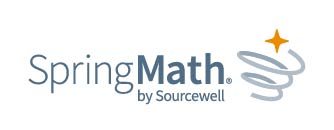The math intervention process explained
According to the Nation’s Report Card, students in the United States experience persistently low math achievement scores across all grades. School district administrators, parents, teachers, and students have struggled to find the best program to improve student math performance for years. In response, many districts are implementing a math intervention process. It’s a data-driven approach to improving students’ math skills. These interventions provide a real-time look into students’ learning capabilities, both at the classroom and individual levels.
But a wide variety of math intervention programs exist and finding the right one can be challenging.
The SpringMath approach to math intervention
SpringMath proves that it can provide high achievement rates and greatly reduce the learning gap among students. The approach is based on 20 years of academic research and highly rated by the National Center for Intensive Intervention.
SpringMath sets students up unlike any other math intervention programs. The program ensures no student falls behind through weekly monitoring throughout the school year. Teachers can analyze reporting and take action accordingly after identifying areas where students are excelling and areas that need further improvement.
Math interventions in the SpringMath program create a safe environment for students using peer-to-peer monitoring during 15-minute assessments. This allows the program to run simultaneously with an already-established curriculum and removes the need for additional time from both teachers and students after class. Sample interventions are available for educators and administrators to review.
“Changing math curricula as an approach for whole-school intervention when large numbers of students do not achieve math proficiency is more costly than targeted, preventative math intervention.”
- Dr. Amanda VanDerHeyden
Getting started with SpringMath
Creating a SpringMath program requires district leaders and teachers to complete one to three hours of specialized training with experienced staff members. SpringMath results in long-term success for school districts, teachers, and students alike by providing ongoing support.
SpringMath proves its return on investment (ROI) to be higher than many larger curricula. Dr. VanDerHeyden explained, “Changing math curricula as an approach for whole-school intervention when large numbers of students do not achieve math proficiency is more costly than targeted, preventative math intervention.”
SpringMath’s goal of a high-level math proficiency for all students is not only achievable; it is easy using the streamlined math intervention program. Teachers have access to online data-driven reporting, additional help and resources, peer-monitoring assessments and more. Teachers have confidence in providing their students with the tools for success. At the same time, districts have confidence in an effective plan for high math proficiency ratings along all grade levels for the school year.

